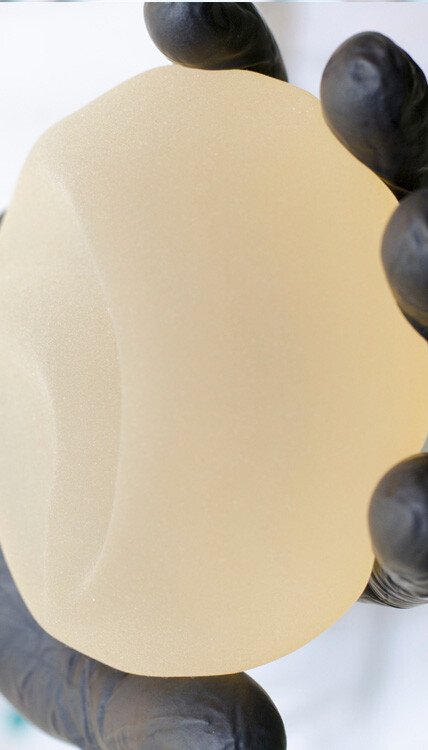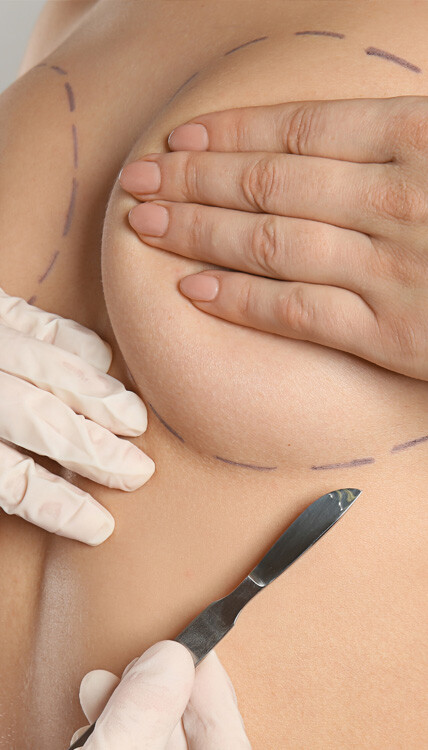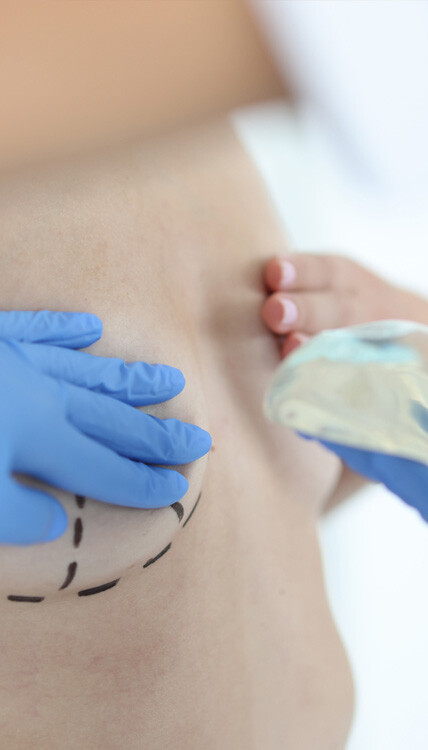Breast reduction is a great surgery for women that have enlarged or symptomatically enlarged breasts. Learn more from Dr. Effie Politis.
Continue readingDoes mastopexy reduce breast size?
Some undergo mastopexy or breast lift surgery that rejuvenates and helps restore the shape of the breasts. Learn more at Politis Plastic Surgery.
Continue readingWhat is Breast Explantation Surgery
Hi everyone, this is Dr. Effie Politis and I’d like to talk about a great article on the April edition of the PRS called contemporary strategies in breast explantation surgery.
So, what is explantation surgery? It is a surgery in which someone proceeds with removing their implants and not replacing them. I’m seeing quite a few patients that are interested in this surgery for various reasons. We all know that implants are man-made devices.
The first reason that women would opt to undergo the surgery is because of implant rupture. I tell women that breast implants are not a “one and done” device, they are a prosthetic that is placed in your body so you need surveillance and you likely will need one or several surgeries in the future if you opt for breast implants. There is a small chance of them rupturing. We can discuss more the difference between saline and silicone ruptures in the future.
Number two is Breast Implant-Associated ALCL (anaplastic large cell lymphoma), this is a rare lymphoma associated with textured implants which I do not use. So it’s not really an issue with my practice but I do see some patients with prior history of textured implants.
Number three is breast implant illness. This is a large topic that’s often discussed on social media. It’s a name given to patients for a wide range of symptoms. The current data shows that there is no cause and effect relationship between implants and these symptoms, however, we certainly are proponents of what women want to do with their bodies. So if they want their implants removed they certainly have the right to have that done. However, the data based on long term studies does not show whether explantation surgery reliably reduces these symptoms.
The last reason women want their implants removed is for non-medical reasons like effects of aging, weight changes, pregnancy, and shifting perspective in aesthetic beauty, as we know there is a movement towards smaller breasts. So women seeking explantation surgery just need to be aware of the risks and benefits in any adjunct surgeries that can be done to enhance their breasts. We look at each woman on an individual basis. It’s a woman’s choice to have their implants removed and we consider the patient’s risk profile, patient preference as well as safety when guiding them on whether explantation surgery is the right surgery for them. I would advise you all to always consult with a board-certified plastic surgeon with a specialty in breast surgery when considering these types of procedures. You can always DM me or look at my website as I’ll have more information. Thank you so much.
Subfascial Breast Augmentation with GalaSHAPE 3D Scaffold
What to consider before you get a breast augmentation
Considering breast augmentation?
Whether your reasons are for the enhancement of your appearance, correction of uneven breasts, or following a mastectomy procedure, there are several things you have to keep in mind.
When considering breast augmentation, it is important to speak with a plastic surgeon who will help you decide whether the procedure is right for you. At Politis Plastic Surgery, we will conduct a physical exam, get your medical history, listen to your concerns, consider your aesthetic goals, and offer options for how to proceed. We only recommend this surgical procedure to patients in good health who have realistic expectations. This is why the consultation is critical.
While your surgeon may use implants, fat transfer, or both to augment your breasts, the decision primarily depends on your existing breast tissue, body mass, and frame, as well as your desired body shape. The surgeon will create a personalized plan and provide you with pre-operative instructions to ensure the experience is as easy, safe, and comfortable as possible.
There’s more info on breast augmentation in our website. You can check the link in our bio.
Here is a sneak peek of our recent breast augmentation patient. Will share a full before & after soon, along with the behind-the-scenes of the procedure! Stay tuned!
What defines the perfect breasts?
According to Dr. Malluci of the Royal Free and University College London Hospitals, it is the relative size of the upper and lower halves of breasts that holds the secret of the perfect bust.
He believes the most-appealing female breasts should be only slightly smaller above the nipple than below.
To support his hypothesis, he asked more than 1,300 people to rank four breast types with different proportions. Board-certified plastic surgeons have championed the adoption of this aesthetic principal.
This golden ratio for breasts is not just a modern phenomenon.
Throughout history, from the earliest representations of women to the statues of antiquity, from Renaissance masters to modern photographers, artists have chosen the same proportions.
What is the 14 Point Plan?
During your consultation, an important question that you need to ask your surgeon is whether or not they follow the 14-Point-Plan.
What is the 14-Point Plan
The 14-Point-Plan is designed to minimize the number of bacteria that can contaminate breast implants at the time of surgery. It was first published in 2013 and has since been widely adopted all around the world. Bacterial contamination of breast implants at the time of surgery has been shown to cause capsular contracture – hardening, pain, and deformity following breast implant surgery.
The 14-Point-Plan outlines strategies that can be incorporated into breast implant surgery that reduce the number of bacteria that can contaminate the breast implant surface.
Here you can see a funnel is being used to place the breast implant into the dissected pocket.
Finding the Right Surgeon for Breast Augmentation
Whether your breasts are sagging, asymmetrical or too small for your body size, breast augmentation can help you regain a feeling of attractiveness, positive self-image and confidence. But the success of the procedure depends on good communication and the expertise of your plastic surgeon. A skilled surgeon will not only enlarge your breasts to the desired size, but also apply measures and techniques that minimize the risks and complications of the procedure.
What makes someone the right surgeon for breast augmentation?
1. Board-certified
Board certification indicates that the surgeon has undergone rigorous training and testing. It is also proof that the surgeon is competent and experienced enough in performing the procedure. Find a surgeon certified by the American Board of Plastic Surgery (ABPS) or the American Board of Cosmetic Surgery (ABCS) and check the status of his or her license before you schedule a consultation.
2. Experienced
Your breast augmentation surgery is more likely to be successful when performed by a plastic surgeon who conducts the procedure on a regular basis. Remember, the right surgeon will not only determine the type and shape of breast implants to use, but will also align the procedure to meet your goals. Plastic surgeons get better at the procedure with time and frequency.
3. Runs an accredited facility
While breast augmentation is typically an outpatient surgery, it should be done in a facility with the highest standards of safety, quality and patient care. Accreditation is proof that the facility is committed to best practices, and a qualified surgeon will work at or run an accredited and accommodating facility.
4. Candid and compassionate
Breast augmentation is a cosmetic procedure that should be tailored to the needs of the patient. To find a surgeon who can perform the surgery in a way that is in line with your goals and expectations, look for someone who takes the time to get to know you.
At the same time, a surgeon should give you correct, straightforward guidance on the best approach to achieving your aesthetic goals—and tell you the honest truth, not what you want to hear. Pick a surgeon who is open, frank and caring.
So how do you find the right surgeon?
1. Get recommendations
Recommendations by people you trust are a great way to find a competent plastic surgeon. Speak with friends, relatives or colleagues who have had the surgery to give you some references. Ask them to share their experiences with their surgeons, what they liked about the experience, and whether their procedures met their aesthetic goals and expectations.
2. Use the internet
Searching the internet is an easy way to find plastic surgeons performing breast augmentation in your local area. For instance, if you reside in Tampa, type keywords such as “plastic surgeon in Tampa,” “best breast augmentation surgeon in Tampa,” “breast implant surgery Tampa,” or “breast augmentation center in Tampa” and see what comes up in your search results. Open the links that appear in your search results and check out details like names and addresses of the surgeons.
3. Narrow down your options
From the recommendations and internet searches, you should have around 5-10 options to choose from. Further research will help you identify the top 2-3 surgeons. To narrow down your options, check out patient reviews posted on patient forums. You might also look for patient testimonials, before and after photos, gallery of patient cases, and case studies to help you get a clearer picture of the work and outcomes achieved by every surgeon in your list.
4. Book an appointment
Now that you have found 2-3 surgeons you believe can perform breast augmentation that meets your aesthetic goals, you should schedule a consultation session with each of them before choosing one. The meeting should help you determine if you are comfortable with and trust the surgeon, and to get a sense of whether or not the surgeon understands what you want from the surgery.
During consultation, the surgeon will thoroughly explain all aspects of the procedure and answer all your questions. This is when you should ask questions, raise your concerns, and find out what to expect before, during and after the procedure. You can also ask to look at before and after photos, patient testimonials, reference to previous patients, and case studies from the surgeon.
5. Make your decision
From your list of 2-3 plastic surgeons, consider choosing the one with whom you most easily communicated and established a rapport during consultation. The right surgeon is the one who made you feel more confident about your surgery through an open and honest discussion about your overall health, lifestyle, aesthetic goals, and your questions and concerns.
At Politis Plastic Surgery, we believe that working with a skilled and experienced board-certified surgeon is the best way to achieve your aesthetic goals through breast augmentation. Dr. Effie Politis is a candid and compassionate surgeon who can help you on your journey to a happier, more confident you. She performs breast augmentation frequently and with remarkable outcomes for her patients. For more information about plastic surgery, visit the site Politis Plastic Surgery website.
Bioengineered Breast: Hybrid Breast Reconstruction
𝘋𝘦𝘷𝘦𝘭𝘰𝘱𝘪𝘯𝘨 𝘢 𝘩𝘺𝘣𝘳𝘪𝘥 𝘤𝘰𝘯𝘤𝘦𝘱𝘵 𝘪𝘯 𝘪𝘮𝘮𝘦𝘥𝘪𝘢𝘵𝘦 𝘴𝘵𝘢𝘨𝘦 𝘣𝘳𝘦𝘢𝘴𝘵 𝘳𝘦𝘤𝘰𝘯𝘴𝘵𝘳𝘶𝘤𝘵𝘪𝘰𝘯.
I was first introduced to the concept of “bioengineered breast” in 2009 by Dr. Pat Maxwell and colleagues. He originally coined this term to describe an enhanced breast form consisting of a combination of cohesive gel breast implant, regenerative scaffold, and regenerative cells.
The implant and the soft tissue covering it can both be enhanced to achieve the optimal female breast form.
Enhancing the soft-tissue cover not only supplements volume and shape but also further alters how the recipient’s host tissue responds to the foreign body implant.
This powerful combination of constructs better allows us to achieve the ultimate goal of breast reconstruction: to recreate a breast that appears and feels like the natural breast.
This patient had large breasts and underwent bilateral skin-sparing mastectomies. She opted for one-stage reconstruction to minimize downtime. This was achieved using a hybrid concept after the mastectomy flap perfusion was evaluated.
I was able to pair an anterior acellular dermal matrix sheet with a posterior stable Galaflex base to provide the patient with both softness and stability.
She plans on having fat grafting during her nipple-areolar reconstruction to further augment her soft tissue envelope and soften her breast borders.
Breast Augmentation and Cancer: Is There a Link?
Breast implants do not cause or increase the risk of breast cancer, but they have been linked with Anaplastic Large-Cell Lymphoma (ALCL), a rare cancer of the immune system. According to the Food and Drug Administration (FDA), the use of breast implants with textured surfaces and polyurethane outer shells has a very low but increased risk of ALCL. The cancer is also called Breast Implant-Associated Anaplastic Large-Cell Lymphoma (BIA-ALCL) because of its link with certain breast implants.
What is BIA-ALCL?
Breast Implant-Associated Lymphoma is not breast cancer. It is a type of non-Hodgkin’s lymphoma, a cancer of the immune system. Most cases of the cancer occur around the scar tissue and fluid near the breast implant. However, in some cases, it can spread throughout the body. Though the risk of developing BIA-ALCL is very low, the cancer is serious and can lead to death, particularly if not treated early.
How is BIA-ALCL associated with breast implants?
While the link between breast implants and Anaplastic Large-Cell Lymphoma is still unclear, it is believed that the growth of bacteria on the surfaces of breast implants can, eventually, result in increased stimulation of lymphocytes. The stimulated lymphocytes may then trigger an immune response that leads to BIA-ALCL.
Since only 1 in 50,000 women with breast implants develop the disease, the chance of BIA-ALCL being triggered by implants is considered very low. Also, the risk does not increase with either silicone or saline-filled implants.
Because the immune response that causes BIA-ALCL depends on the growth and proliferation of bacteria, the risk of cancer is related to the surface area of the implant. Textured implants and expanders have a higher surface area compared to smooth implants, resulting in a higher risk of BIA-ALCL compared to smooth surface implants. In fact, up to 96% of cases of the cancer are reported in patients with breast implants with textured (bumpy) surfaces and polyurethane outer shells.
What are the warning signs?
When BIA-ALCL occurs, it tends to arise more than one year after breast augmentation surgery. Patients develop chronic swelling, a mass (lump), pain, or fluid buildup around the implant. The breast may harden, have new scar tissue, or may be painful around the vicinity of the implant. Plus, there may be hair loss, skin rash near the breast, and exhaustion (a sign of a weakened immune system).
Is BIA-ALCL curable?
ALCL is curable, particularly when discovered early. To diagnose ALCL, the doctor will perform a needle biopsy and an imaging test (mammogram or ultrasound). Early treatment typically involves the removal of the implant and the surrounding scar tissue. But, in some cases, chemotherapy and radiotherapy may be necessary.
What should you do?
If you are considering breast augmentation, reconstruction, or replacement (revision) with breast implants, you should discuss your goals and expectations with your plastic surgeon. Your surgeon will also explain the benefits and risks of having breast implants, the need to monitor implants for complications, and their eventual replacement or removal.
If you already have breast implants, concerns related to BIA-ALCL should not mean you remove them. If there are no symptoms, no need to worry. Instead, you should speak with your plastic surgeon about the risk of developing the cancer. But if you do have symptoms, talk to your doctor about further evaluation, confirmation, and treatment of the cancer.
At Politis Plastic Surgery, we do not use breast implants and tissue expanders that the FDA has listed as a potential cause of BIA-ALCL. During the consultation, we inform our patients about the risks associated with breast implants, including BIA-ALCL. When treating patients with suspected BIA-ALCL, we develop individualized treatment plans in coordination with experts in the diagnosis and treatment of the cancer.
Do you have questions or concerns about the use of breast implants in breast augmentation or reconstruction? Dr. Effie Politis will answer your specific questions and help you make an informed decision about cosmetic surgery. For more information on breast implants and associated risks and complications, visit the Politis Plastic Surgery website.










